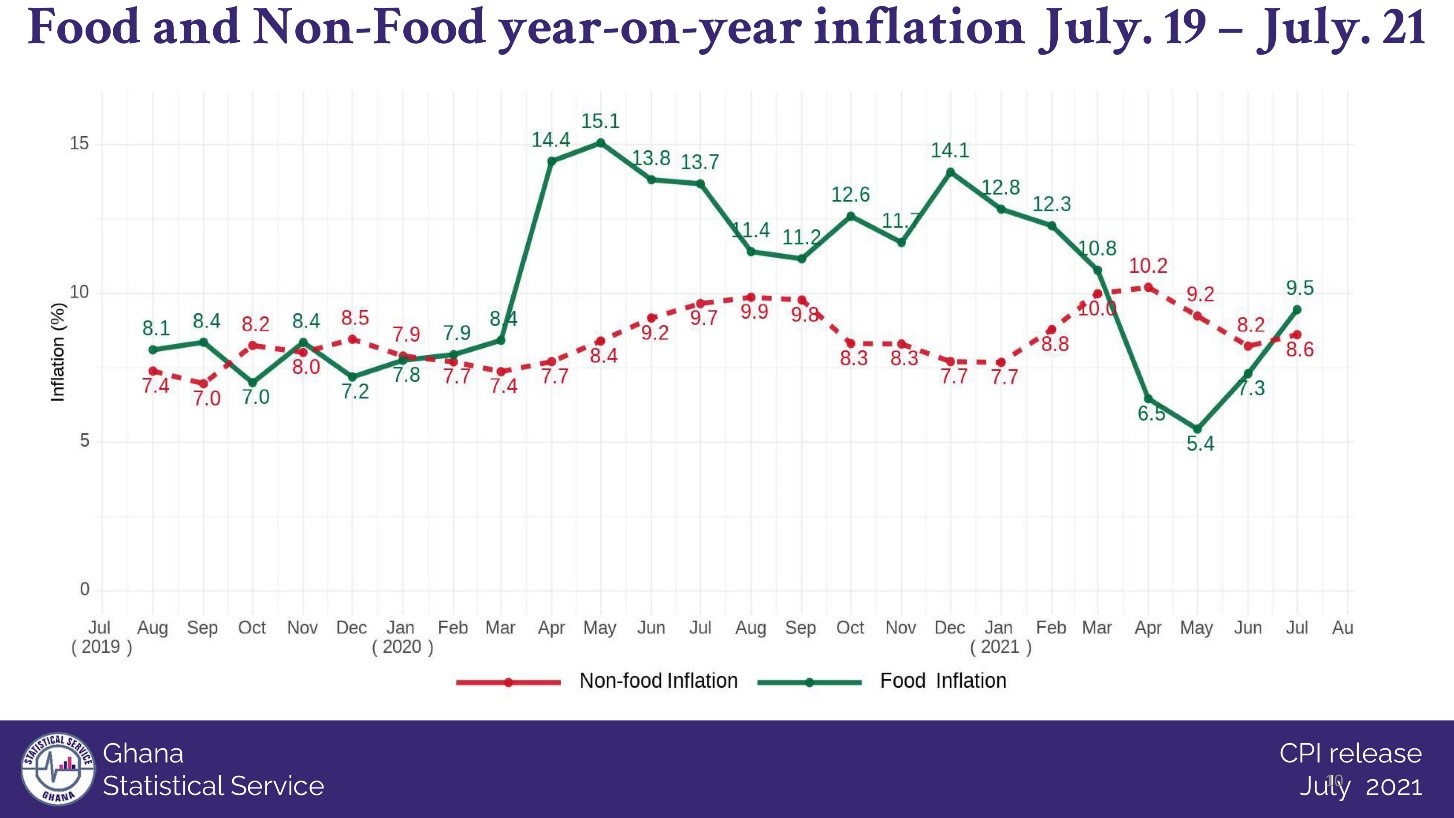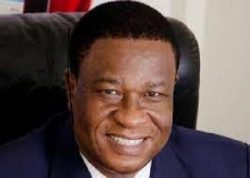The continuous rise in food prices, especially, in the northern part of the country, has shot overall inflation up again in July, making it the highest rate since April 2021, data from the Ghana Statistical Service (GSS) has shown.
According to the data released yesterday, July recorded inflation rate of 9 percent, up from the 7.8 percent recorded the previous month. Like June, the main driver pushing inflation upward is food prices, but this time, rather surprisingly, it came from an unlikely region, the northern part of the country.
Food prices in the Upper West and Northern Regions recorded inflation of 20.3 percent and 20.5 percent respectively, whereas, that of the capital recorded 9.5 percent. This consequently ended a 16-month cycle of the Greater Accra Region persistently recording the highest overall inflation rate, as it recorded a rate of 11.7 percent, compared with 13.8 and 13.5 percent for Upper West and Northern Regions respectively.
In all, the food basket recorded inflation of 9.5 percent, up from the 7.3 percent in June, thereby, taking the basket’s contribution to national inflation to 47 percent, compared with 41.8 percent in previous month. Food items that led the pack in the month were vegetables, cereal products, live animals and meat, and ready-made food.

The non-food basket, on the other hand, recorded inflation rate of 8.6 percent, also up from the 6.2 percent recorded in June.
Also, the gap between inflation for locally produced items and imported ones continue to widen, as the former saw rate increased by 1.5 percentage points to record 9.4 percent, while, the latter saw a marginal uptick to 7.1 percent from 7 percent.
More than three-quarters of the rate of inflation recorded in July 2021was contributed by food and non-alcoholic beverages: housing, water, electricity and gas and transport.
Inflation forecast and target
Government has targeted inflation to fall within the medium-term band of 8-10 percent at the end of the year.
The IMF Article IV reports states that, pressures from higher fuel and import prices and budget revenue measures could push inflation to 9.6 percent by the end of 2021, before returning to target next year.
The Monetary Policy Committee (MPC) of the Bank of Ghana also noted in its July report that, since the beginning of the year, headline inflation in several advanced and emerging market economies have picked up sharply above targets, driven mainly by energy price pressures, and supply constraints amidst increased consumer demand as economies re-open.
However, it adds, the expectation is that over the medium-term, headline inflation will return to target, moderated by the still sizeable spare capacity, slack in labour market conditions and restrained wage growth. In emerging market and frontier economies, the pace of price movements would be dictated by currency movements and Covid-related supply-side constraints.
Despite this, the committee expressed confidence that inflation will remain within the target band.
“Headline inflation has eased sharply and reverted within the medium-term target band, driven mainly by the tight monetary policy stance and some base drift effects. The latest forecast remains broadly unchanged with inflation projected to remain within band and around the central path in the forecast horizon barring any upside risks from fiscal pressures,” the report said.










